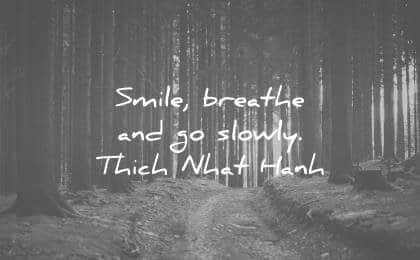Alternate Nostril Breath Technique & Instructions
Whether you’ve come across this breath through your yoga or meditation practice, the alternate nostril breath technique (also known as Nadi Shodhana in Sanskrit) is a very powerful breath that can help you to move energy into your upper chakras, calm the mind, and access intuitive guidance.
In this post, we’ll go through the proper method for alternate nostril breathing, and we’ll also look at some of the amazing benefits this breath exercise can provide.
Want to go deeper? Enroll in Happiness University to eliminate negative thoughts and become the calm, confident, and happy person you deserve to be.
Or:
Click here to try our 10-minute guided meditation using alternate nostril breathing.
How To Do Nadi Shodhana Pranayama
To see a list of other breath exercises and techniques, click here.
The basics of alternate nostril breathing are very simple. The idea is that you engage a breath that inhales and exhales through the nostril, using one nostril at a time. As the name suggests, you alternate which nostril you use with each breath.
Here are the steps:

- First, take your right hand and place it over your face. Stretch your index and middle fingers up towards your forehead, pressing lightly against your third-eye center. Meanwhile, hold the thumb and ring finger on either side of your nose. The pinky finger may stick out into the air, as is comfortable for you.
- Before you begin, you may want to exhale sharply from each nostril, clearing the nostrils of any excess mucus. This will prepare your to achieve a soft, easy inhalation and exhalation as you move through the practice.
- Then, engage the thumb to press lightly against the right nostril. You want to press sufficiently hard to block air from entering this nostril, but not so hard that you are pressing your cartilage against the bone in the center of your nose.
- Inhale through the left nostril, drawing in a full breath and allowing the air to linger at the top of the breath, bringing energy into your 6th chakra.
- At the top of the exhale, switch the fingers, releasing the thumb and using the ring finger to press lightly against your left nostril. Again, you want to press sufficiently to block any airflow through the left nostril, but not so hard that you are pushing your cartilage against the center of the nose. The pose should feel easy, with only a slight constriction.
- Next, exhale through the right nostril. At the bottom of the breath, release all of the air from your body. If it is comfortable, pause briefly before beginning your next inhalation.
- As you inhale, continue to use the right nostril only. Again, inhale fully, drawing the air into your third-eye and allowing the breath to linger for a moment.
- At the top of your inhalation, switch the fingers and exhale through your left nostril. Repeat this process for several minutes, always changing your fingers at the top of the breath to switch the nostril you use after each inhale.
- As you continue to work with this technique, you will likely feel a sense of lightness in your forehead. This is normal, and is an indication that you are engaging with your third eye chakra. Continue to rest your awareness on this point, and you will continue to enter more deeply into the meditation.
- When you are ready, release the breath technique at the end of an exhale. Take a long breath in through both nostrils and exhale fully. Allow your breath to return to a soft, easy pace, breathing in and out through both nostrils. Maintain your attention on your forehead, and rest into the ease, peace, stillness, and bliss that you feel!
New to meditation? Check out this guide to the easiest meditation practices.
Nadi Shodhana Benefits
As I mentioned above, alternate nostril breathing is also known as Nadi Shodhana in Sanskrit. It is a technique that has been used for centuries in Indian and Eastern traditions, but has only recently become popular in the West.
There are many benefits of using this technique, which go over and above the normal benefits of meditation.

Scientific Benefits
Let’s start with the science. Nadi Shodhana has been proven to have a number of direct correlations with improved health, including:
- Lowered Heart Rate, Blood Pressure, and Stress levels: Slow, even breathing, when practiced consistently, has been shown to dramatically reduce stress and decrease heart rate variability, making you less prone to environmental triggers. Read the study.
- Improved Lung Capacity and Endurance: Working with one nostril at a time improves the efficiency with which you are able to breathe, which has been linked to an overall stronger lung capacity. Read the study.
- Improved Fitness Levels: Given the above two points, it’s no surprise that with a more stable heart-rate and better lungs, this breath technique can improve your fitness, and has been linked to improved performance in athletes. Read the study.
- Neurocognitive and Metabolic Improvements: Lastly, in addition to the benefits above, a comprehensive review of over 1400 studies showed that pranayama (yogic breathing) also has positive neurocognitive and metabolic implications, improving your mental performance and digestive health. Read the review’s findings.
Holistic Benefits
In addition to the scientific studies outlining the benefits of this breath, there are also a number of holistic benefits, these include:
- Revitalizing your entire body and natural energy system.
- Connecting with your third eye chakra.
- Improving relaxation during sleep. (or try this guided yoga nidra audio)
- Balancing the masculine and feminine energies in the body.
- Accessing intuitive guidance from the Akashic Records, and other non-physical guides.




